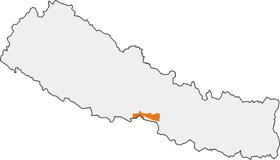
Guide to Visiting Chitwan National Park, Bagmati Province, Nepal
Date: 16/08/2024
Introduction
Chitwan National Park, located in the subtropical lowlands of south-central Nepal, stands as a testament to Nepal’s commitment to conservation and sustainable tourism. Designated as Nepal’s first national park in 1973 and later expanded, it covers an impressive area of 952.63 square kilometers (Travel Talk Tours). Recognized as a UNESCO World Heritage Site in 1984, the park is renowned for its rich biodiversity, including endangered species like the one-horned rhinoceros and the Bengal tiger, as well as its cultural heritage (Nepal Travel Vibes). The park also features Beeshazari Tal, a Ramsar Site, and is home to diverse ecosystems comprising grasslands, dense forests, and riverine habitats (National Parks Association). This comprehensive guide aims to provide visitors with essential information about the park’s history, significance, visitor details, and travel tips to enhance their experience.
Table of Contents
- [Introduction](#introductionintroduction)
- [History and Significance of Chitwan National Park](#history-and-significance-of-chitwan-national-parkhistory-and-significance-of-chitwan-national-park)
- [Establishment and Early History](#establishment-and-early-historyestablishment-and-early-history)
- [UNESCO World Heritage Site](#unesco-world-heritage-siteunesco-world-heritage-site)
- [Transition from Royal Hunting Reserve](#transition-from-royal-hunting-reservetransition-from-royal-hunting-reserve)
- [Conservation Efforts and Wildlife Protection](#conservation-efforts-and-wildlife-protectionconservation-efforts-and-wildlife-protection)
- [Ramsar Site and Biodiversity Hotspot](#ramsar-site-and-biodiversity-hotspotramsar-site-and-biodiversity-hotspot)
- [Cultural Significance and Tharu Community](#cultural-significance-and-tharu-communitycultural-significance-and-tharu-community)
- [Visitor Information](#visitor-informationvisitor-information)
- [Visiting Hours](#visiting-hoursvisiting-hours)
- [Tickets and Entry Fees](#tickets-and-entry-feestickets-and-entry-fees)
- [Travel Tips and Nearby Attractions](#travel-tips-and-nearby-attractionstravel-tips-and-nearby-attractions)
- [Economic Impact and Tourism](#economic-impact-and-tourismeconomic-impact-and-tourism)
- [Sustainable Tourism and Community Engagement](#sustainable-tourism-and-community-engagementsustainable-tourism-and-community-engagement)
- [Challenges and Future Prospects](#challenges-and-future-prospectschallenges-and-future-prospects)
- [FAQ](#faqfaq)
- [Conclusion](#conclusionconclusion)
History and Significance of Chitwan National Park
Establishment and Early History
Chitwan National Park was established in 1973, initially covering 932 square kilometers, and later expanded to 952.6 square kilometers in 1977 (Travel Talk Tours). This milestone marked the beginning of Nepal’s focused conservation efforts to protect the region’s rich biodiversity and unique ecosystems.
UNESCO World Heritage Site
In 1984, Chitwan National Park was designated as a UNESCO World Heritage Site, recognizing its outstanding universal value (Nepal Travel Vibes). This designation has significantly boosted international attention and support for its conservation initiatives.
Transition from Royal Hunting Reserve
Before its establishment as a national park, the area served as a private hunting reserve for Nepalese aristocrats and royals. The shift from a hunting reserve to a national park reflected a significant change in management, focusing on conservation and sustainable tourism (Travel Talk Tours).
Conservation Efforts and Wildlife Protection
Chitwan National Park was primarily established to protect endangered species such as the one-horned rhinoceros and the Bengal tiger. The park has implemented various wildlife protection policies, resulting in notable conservation successes (Chitwan Wildlife Safari).
Ramsar Site and Biodiversity Hotspot
The park includes Beeshazari Tal, a Ramsar Site, located in its buffer zone. Chitwan is home to diverse ecosystems, including grasslands, dense forests, and riverine habitats, housing 68 species of mammals, 544 species of birds, 56 species of herpetofauna, and 126 species of fish (National Parks Association).
Cultural Significance and Tharu Community
Chitwan National Park is situated in an area inhabited by the Tharu community, an indigenous group with a rich cultural heritage. Visitors can engage with the Tharu community, learning about their traditional practices and way of life, enhancing the overall experience (Nepal Travel Vibes).
Visitor Information
Visiting Hours
Chitwan National Park is open to visitors throughout the year, but the best time to visit is from October to March. Park gates typically open from 6 AM to 6 PM, but it is advisable to check the exact timings before planning your visit.
Tickets and Entry Fees
The entry fee for foreign tourists is approximately NPR 2,000 per person. For SAARC nationals, the fee is NPR 1,500, and for Nepalese citizens, it is NPR 150. Additional fees may apply for guided tours and safari activities.
Travel Tips and Nearby Attractions
- Best Time to Visit: October to March for the most pleasant weather and optimal wildlife viewing.
- Travel Tips: Wear comfortable clothing, carry insect repellent, and stay hydrated.
- Nearby Attractions: Explore nearby sites like the Elephant Breeding Center and the Tharu Cultural Museum.
Economic Impact and Tourism
Chitwan National Park is a major tourist destination, attracting over 185,000 foreign tourists annually, significantly boosting the local economy and providing employment opportunities (Kathmandu Post).
Sustainable Tourism and Community Engagement
The park’s management collaborates with local communities to ensure that tourism activities benefit both the environment and the residents. This approach has fostered a sense of shared responsibility for conservation (National Parks Association).
Challenges and Future Prospects
Chitwan National Park faces challenges such as habitat degradation, human-wildlife conflicts, and climate change. Future efforts will focus on expanding conservation initiatives, enhancing visitor experiences, and strengthening community involvement (Chitwan Wildlife Safari).
FAQ
- What are the visiting hours for Chitwan National Park? The park is generally open from 6 AM to 6 PM.
- How much do tickets to Chitwan National Park cost? Entry fees are NPR 2,000 for foreign tourists, NPR 1,500 for SAARC nationals, and NPR 150 for Nepalese citizens.
Conclusion
Chitwan National Park’s history and significance are deeply intertwined with Nepal’s conservation journey. From its origins as a royal hunting reserve to its current status as a UNESCO World Heritage Site, the park has played a pivotal role in protecting endangered species and preserving biodiversity. Its cultural significance, economic impact, and commitment to sustainable tourism make it a model for conservation efforts in Nepal and beyond. Visitors contribute to ongoing efforts to safeguard this remarkable natural treasure for future generations.
References
- Travel Talk Tours (n.d.). 5 historical facts about Nepal’s Chitwan National Park. Retrieved from Travel Talk Tours
- Nepal Travel Vibes (n.d.). Chitwan National Park. Retrieved from Nepal Travel Vibes
- National Parks Association (n.d.). Nepal National Parks: Chitwan National Park. Retrieved from National Parks Association
- Chitwan Wildlife Safari (n.d.). Chitwan National Park. Retrieved from Chitwan Wildlife Safari
